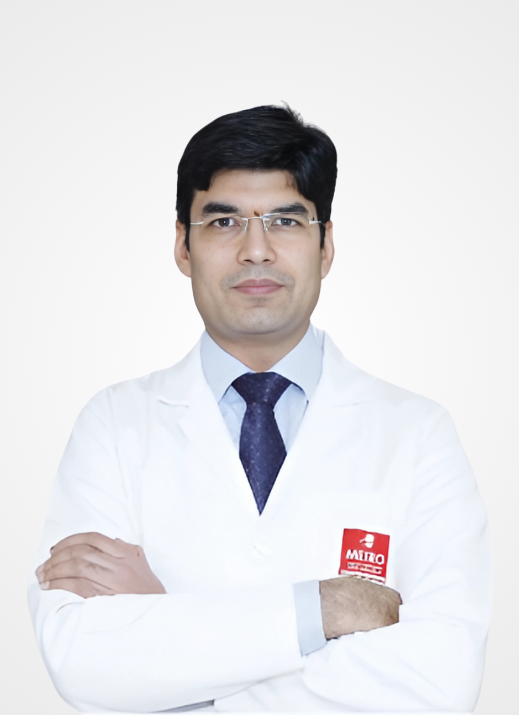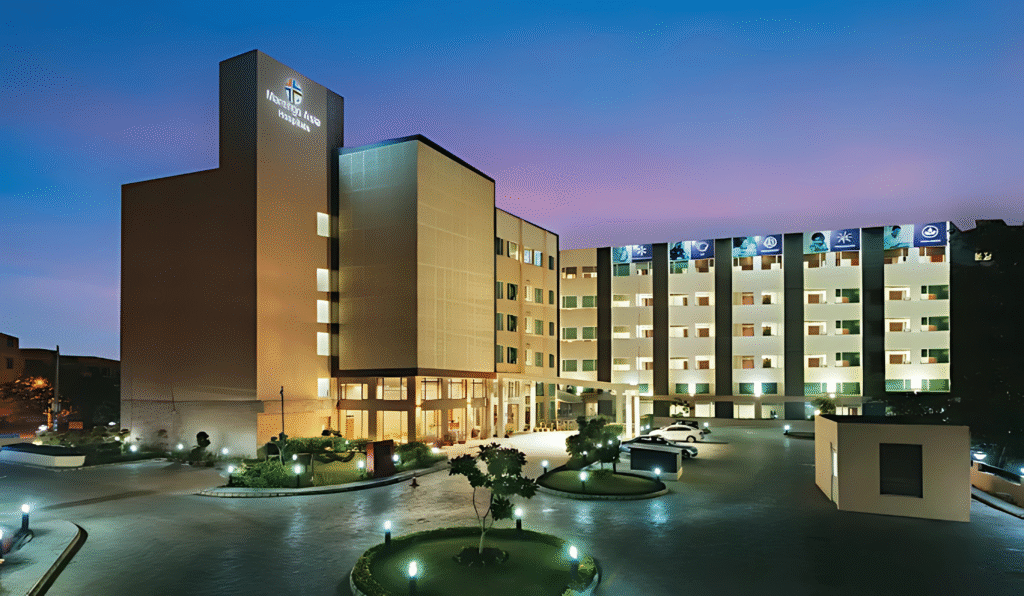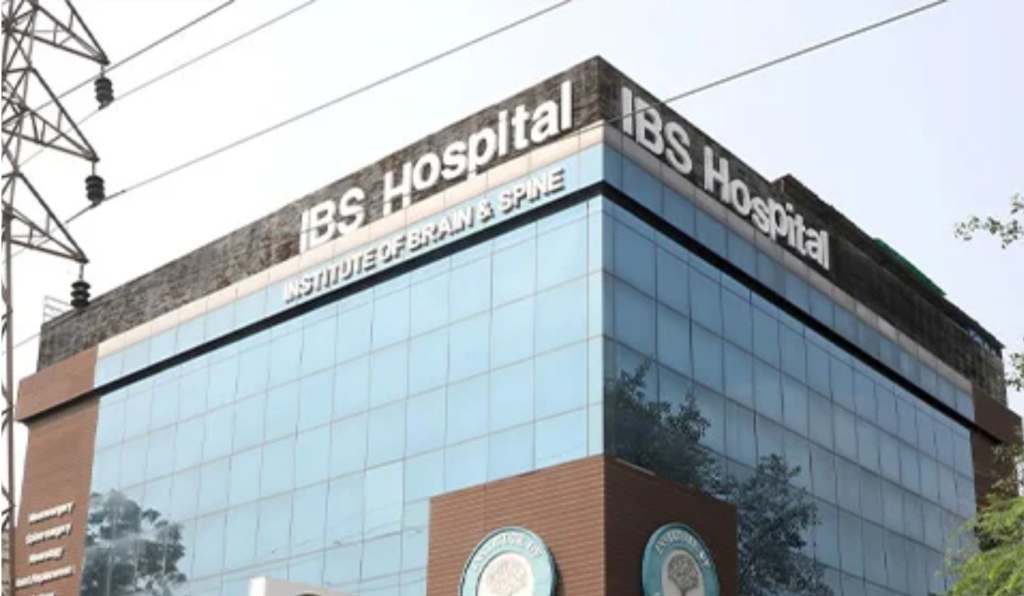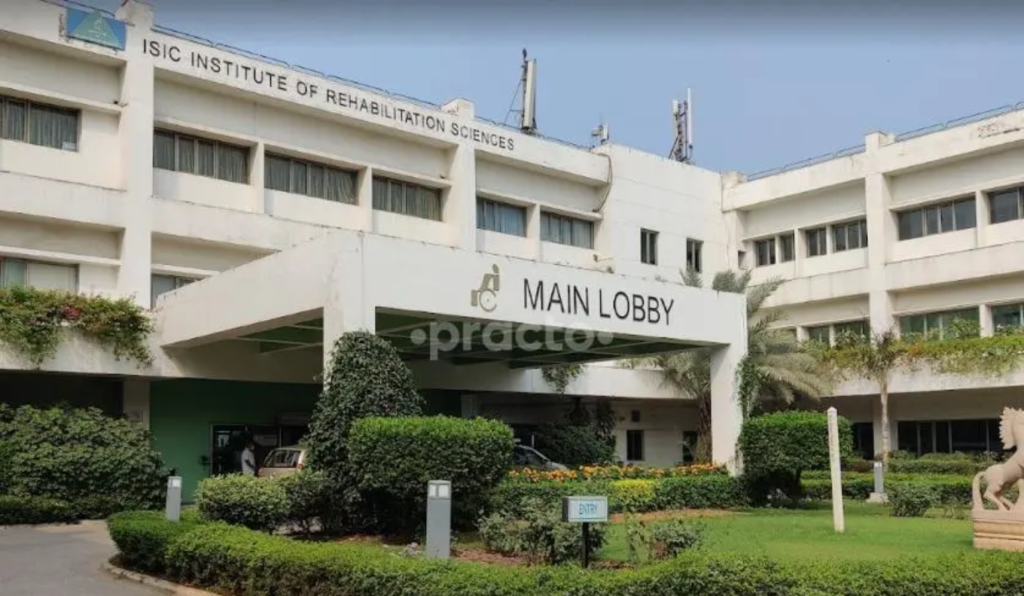Osteoporosis & Bone Density Disorders Treatment Cost in India

What is Osteoporosis & Bone Density Disorders?
Osteoporosis is a condition where bones become weak and brittle due to decreased bone mineral density, making them more susceptible to fractures. It’s particularly common among postmenopausal women but can affect anyone due to poor nutrition, hormonal imbalance, or certain medications.
Osteopenia, a milder form of bone loss, and Paget’s disease of bone are also part of this group. Conditions like secondary osteoporosis, resulting from chronic illnesses or long-term steroid use, also fall under bone density disorders. Early diagnosis and proper management can significantly reduce fracture risk.
How Does Osteoporosis & Bone Density Disorders Develop?
Osteoporosis and other bone density disorders develop when bone resorption (breakdown) outpaces bone formation, leading to decreased bone mass and structural deterioration. This imbalance is common in postmenopausal women due to estrogen deficiency but can affect men and younger individuals due to hormonal disorders, medications, or chronic illnesses.
The process begins silently, with no symptoms until a fracture occurs. Bones become porous, brittle, and prone to collapse, especially in the hip, spine, and wrist. Osteopenia is an early stage of low bone density, often progressing to full-blown osteoporosis without lifestyle changes or medical intervention. Poor nutrition, lack of weight-bearing exercise, and calcium or vitamin D deficiency accelerate the condition.
Causes and Risk Factors of Osteoporosis & Bone Density Disorders
Osteoporosis and other bone density disorders occur when the body loses too much bone, makes too little bone, or both. The result is weak, fragile bones that break easily. This condition develops silently over time, making early recognition of risk factors vital for prevention and management.
Hormonal Changes
One of the primary causes of osteoporosis is hormonal imbalance, particularly a drop in estrogen or testosterone levels, which affects bone regeneration.
- Postmenopausal women face high risk due to decreased estrogen.
- Men with low testosterone also experience reduced bone density.
- Thyroid disorders, especially hyperthyroidism, can accelerate bone loss.
Nutritional Deficiencies
Bone formation relies heavily on specific nutrients. A lack of these can interfere with proper bone growth and maintenance.
- Calcium and Vitamin D deficiency impairs bone strength and mineralization.
- Low protein intake reduces the raw materials needed for bone structure.
- Excessive caffeine or alcohol can decrease calcium absorption.
Lifestyle and Medical Risk Factors
Certain behaviors and conditions contribute to weaker bones over time.
- Sedentary lifestyle or prolonged immobility reduces bone stimulation and growth.
- Smoking impairs bone health by reducing blood flow and nutrient delivery.
- Certain medications, like corticosteroids and anti-seizure drugs, can lead to bone loss.
- Chronic illnesses such as rheumatoid arthritis, kidney disease, or celiac disease increase risk.
Symptoms of Osteoporosis & Bone Density Disorders
Osteoporosis is often referred to as a “silent disease” because it typically develops without obvious symptoms in its early stages. However, as the condition progresses and bone loss becomes significant, various symptoms may begin to appear.
Common Symptoms Include:
- Frequent Bone Fractures
Fragile bones are more prone to fractures, especially in the hips, wrists, or spine—even from minor falls or mild pressure. - Loss of Height Over Time
Compression fractures in the vertebrae can lead to a noticeable decrease in height as the spine collapses gradually. - Stooped Posture (Kyphosis)
Spinal fractures may cause a curved or hunched back, commonly referred to as a “dowager’s hump.” - Persistent Back or Neck Pain
Crushed or collapsed vertebrae can lead to chronic pain in the back or neck area. - Bone Pain or Tenderness
Some individuals may experience localized pain in the bones, especially when under stress or weight. - Decreased Grip Strength and Balance Issues
Muscle weakness and instability may accompany bone loss, increasing the risk of falls and further injury.
Since osteoporosis may not show symptoms until significant bone loss has occurred, early screening and bone density testing are essential for those at risk.
Types of Osteoporosis & Bone Density Disorders
Osteoporosis and related bone density disorders are conditions where bones become weak and brittle, increasing the risk of fractures. They are usually progressive and can go unnoticed until a fracture occurs. These disorders may result from age-related changes, hormonal imbalances, or underlying diseases. Understanding the specific type of bone density disorder is essential for tailoring treatment and preventing complications such as hip or vertebral fractures.
Primary osteoporosis is the most common type and typically affects older adults, especially postmenopausal women. It results from natural aging or hormonal changes that reduce bone mass and strength. This type includes both postmenopausal and age-related osteoporosis. It is usually diagnosed through bone mineral density scans and can be managed with medications, lifestyle modifications, and calcium/vitamin D supplementation to reduce fracture risk.
Secondary osteoporosis is caused by underlying medical conditions or long-term use of certain medications such as corticosteroids, anticonvulsants, or chemotherapy. Disorders like rheumatoid arthritis, chronic kidney disease, and endocrine abnormalities (e.g., hyperthyroidism) may also contribute. Management focuses on treating the root cause alongside standard osteoporosis care, including weight-bearing exercises and anti-resorptive or anabolic bone medications.
Osteopenia is a precursor to osteoporosis and indicates lower-than-normal bone density, though not low enough to be classified as osteoporosis. It often serves as a warning sign, highlighting the need for early intervention to prevent further bone loss. Regular bone density testing, dietary changes, and physical activity can help reverse or slow progression toward full-blown osteoporosis.
Juvenile Osteoporosis – Occurs in children or adolescents, usually idiopathic but sometimes linked to underlying metabolic or genetic conditions.
Idiopathic Osteoporosis – Diagnosed when no clear cause is found, often affecting younger adults.
Glucocorticoid-Induced Osteoporosis – Caused by prolonged steroid use; one of the most common forms of secondary osteoporosis.
Osteomalacia – Often confused with osteoporosis; it involves softening of bones due to vitamin D deficiency rather than decreased bone mass.
Which Type of Osteoporosis is the Most Dangerous?
Severe Osteoporosis with Vertebral Compression Fractures is considered the most dangerous form. In this type, the bones—especially in the spine—become so brittle that even minor stress or movement can cause painful fractures. These fractures can lead to a stooped posture, loss of height, chronic pain, and in severe cases, respiratory or digestive complications due to spinal compression. It significantly reduces quality of life and increases the risk of future fractures.
Why Choose India for Orthopaedic Treatment?
India has emerged as a global hub for advanced orthopaedic care, attracting thousands of international patients each year. With a unique blend of medical excellence, cutting-edge technology, and cost-effective treatment, India offers unmatched advantages for those seeking relief from joint disorders, spinal conditions, fractures, nerve compression syndromes, and more. Whether it’s a complex surgical intervention or conservative therapy, patients receive world-class care tailored to their individual needs. Here’s why India stands out as a preferred destination for orthopaedic treatments.
India is home to some of the most experienced and internationally trained orthopaedic specialists. Many surgeons have trained in top global institutions and bring extensive expertise in managing complex cases—ranging from osteoarthritis and fractures to congenital and developmental bone disorders.
Indian hospitals offer state-of-the-art facilities equipped with cutting-edge imaging, robotic surgery, arthroscopy units, and minimally invasive surgical technologies. Dedicated orthopaedic departments ensure focused treatment for ailments like spinal disorders, ligament tears, and bone density issues.
India offers world-class orthopaedic care at a fraction of the cost compared to Western countries. Treatment plans—including surgery, rehabilitation, physiotherapy, and follow-ups—are bundled into affordable, transparent packages, making high-quality care accessible to international patients.
Unlike many countries where patients face long waiting periods for orthopaedic procedures, India ensures prompt consultations, diagnostics, and surgeries. This significantly reduces disease progression and enhances recovery outcomes.
India is a global leader in medical tourism, offering:
✔ Dedicated international patient coordinators
✔ Medical visa assistance for easy travel
✔ Affordable accommodation & travel support
✔ Multilingual staff, including English-speaking doctors
This ensures a smooth and hassle-free experience for foreign patients traveling to India for treatment.
Indian hospitals emphasize treatment and post-operative rehabilitation. Personalised physical therapy plans, nutritional counseling, and long-term follow-up care help restore mobility and improve overall quality of life after treatment.
Different Treatments for Osteoporosis & Bone Density Disorders
Treating osteoporosis and other bone density disorders focuses on slowing bone loss, improving bone strength, and reducing the risk of fractures. A combination of medications, nutritional support, lifestyle modifications, and therapeutic exercises is used to manage the condition effectively. Early intervention can significantly improve quality of life and prevent debilitating complications such as spinal compression fractures or hip breaks—especially in older adults or those with postmenopausal osteoporosis.
How It Works:
Bisphosphonates slow down the rate at which bone is broken down by inhibiting the activity of osteoclasts—the cells that absorb bone tissue.
When It’s Used:
Postmenopausal osteoporosis
Osteoporosis caused by steroid use or other conditions
Patients with previous fractures
Benefits:
Reduces risk of spinal and hip fractures
Maintains bone mass over time
Convenient dosing options (daily, weekly, or monthly)
How It Works:
Calcium supports bone formation, while Vitamin D enhances calcium absorption in the gut and helps with bone remodeling.
When It’s Used:
As baseline support for all osteoporosis patients
For individuals with dietary deficiencies
Alongside medications like bisphosphonates
Benefits:
Strengthens bones naturally
Easy to incorporate into daily routine
Prevents secondary hyperparathyroidism
How It Works:
Modifying daily habits—such as quitting smoking, reducing alcohol, improving posture, and staying active—can significantly reduce bone loss and fall risk.
When It’s Used:
In all patients as supportive care
For prevention in high-risk individuals
Alongside medication and supplements
Benefits:
Improves balance and coordination
Reduces fracture risk from falls
Enhances overall well-being
How It Works:
Estrogen therapy (or estrogen-progestin combination) helps maintain bone density by reducing the rate of bone resorption in postmenopausal women.
When It’s Used:
Postmenopausal women with early osteoporosis
Patients not suitable for bisphosphonates
Individuals with symptoms of estrogen deficiency
Benefits:
Preserves bone mass
Helps manage menopausal symptoms
Reduces spine and hip fracture risk
How It Works:
Exercises like walking, stair climbing, and resistance training stimulate bone formation and improve muscle strength and balance.
When It’s Used:
As a preventive and ongoing management tool
After initial bone strengthening with medication
For long-term self-care and mobility support
Benefits:
Enhances bone strength naturally
Improves posture and joint stability
Reduces risk of falls and fractures
Different Procedures for Osteoporosis & Bone Density Disorders
Procedural interventions for osteoporosis aim to stabilize fractures, restore spinal structure, and prevent future bone damage. These techniques are especially useful in advanced cases where bones have weakened significantly or fractures have already occurred. Innovations such as minimally invasive tools and robotic guidance have made these procedures safer and more precise, enhancing recovery outcomes and mobility in affected patients.
How It Works:
Vertebroplasty involves the injection of bone cement into a fractured vertebra. The cement hardens quickly, stabilizing the spine and reducing pain caused by vertebral compression fractures.
When It’s Used:
Painful spinal fractures due to osteoporosis
Patients with immobility due to vertebral collapse
When conservative treatments fail to provide relief
Benefits:
Rapid pain relief and spinal stability
Minimally invasive with short recovery time
Improves ability to perform daily activities
How It Works:
Kyphoplasty is similar to vertebroplasty but includes an added step: a balloon is inserted and inflated inside the fractured vertebra to restore its height before cement is injected.
When It’s Used:
Recent vertebral fractures with loss of height
Osteoporotic spinal deformities causing pain or disability
When posture correction is also a goal
Benefits:
Restores vertebral height and alignment
Provides effective pain relief
Enhances spinal function and balance
How It Works:
This includes a range of surgical and injectable options designed to strengthen fragile bones using synthetic bone grafts, reinforcement materials, or bone stimulants.
When It’s Used:
In patients with multiple fracture risks
During fracture repair to promote healing
In cases of severe bone loss
Benefits:
Improves bone durability
Supports healing and integration of bone tissue
Reduces re-fracture chances
How It Works:
Small incisions and image-guided tools are used to align and secure broken bones using screws, plates, or rods without large surgical openings.
When It’s Used:
Fragility fractures in hips, wrists, or vertebrae
In elderly or high-risk surgical patients
When faster recovery and less trauma are desired
Benefits:
Reduced pain and blood loss
Faster recovery and hospital discharge
Minimal impact on surrounding tissues
How It Works:
Robotic-assisted systems guide surgeons with enhanced precision during procedures like spinal fixation or fracture alignment, using real-time imaging and navigation.
When It’s Used:
For patients with complex bone structures or deformities
When high accuracy is crucial in fracture repair
In revision surgeries requiring enhanced planning
Benefits:
Superior surgical accuracy and alignment
Lower risk of complications and errors
Customized, patient-specific approach
Other Advanced Procedures and Costs
Advanced procedures in osteoporosis care are increasingly focused on restoring bone quality, preventing fractures, and enhancing skeletal support using cutting-edge technologies and regenerative therapies. These methods are especially suited for patients with severe or treatment-resistant bone loss, offering hope for improved mobility and independence.
How It Works:
These treatments involve injecting mesenchymal stem cells or growth factors into the affected bone areas to stimulate natural bone regeneration and repair.
When It’s Used:
In patients with non-healing fractures due to osteoporosis
As a complementary approach to bone grafts or surgical fixation
When traditional medication has limited effect
Benefits:
Promotes natural bone regeneration
Reduces healing time after fractures
Minimally invasive with lasting effects
How It Works:
Expandable titanium or polymer implants are placed into collapsed vertebrae to restore height and structure, followed by bone cement stabilization—an evolution of kyphoplasty.
When It’s Used:
Severe vertebral compression with height loss
Multi-level spinal deformities
Patients who need added spinal reinforcement
Benefits:
Greater height restoration than balloon kyphoplasty
Enhanced load-bearing support
Reduces adjacent-level fractures
How It Works:
Synthetic or natural materials enriched with osteoinductive agents are used to fill bone voids and promote new bone growth where density is critically low.
When It’s Used:
In patients unfit for bone graft harvesting
During fracture repair or reconstructive surgeries
To reinforce surgical fixation in porous bones
Benefits:
Avoids need for donor bone
Enhances graft incorporation
Reduces complication rates in frail patients
Best Doctors for Osteoporosis & Bone Density Disorders Treatment in India
Best Hospitals for Osteoporosis & Bone Density Disorders Treatment in India
Med Travel India Offerings
How does Med Travel India help you?
Med Travel India is dedicated to assisting international patients in accessing high-quality Orthopaedic treatment in India. We ensure a seamless medical journey from selecting the best hospitals to providing logistical support. Our team works closely with top doctors and healthcare facilities to offer personalised treatment plans tailored to each patient’s condition.
We take care of every aspect of medical travel, allowing patients to focus solely on their recovery. Below is a list of services provided by our company:
Services offered by Med Travel India

Seamless Planning for Your Medical Journey
Before you even arrive, we take care of all the groundwork. From connecting you with top specialists to ensuring all necessary medical evaluations are completed, we make your journey stress-free. Our goal is to provide clarity and comfort before your treatment begins.
- Free Medical Consultation
- Personalized Treatment Plan
- Estimated Cost & Duration
- Visa Assistanc
- Second Opinion Service
- Pre-Arrival Coordination
Worry-Free Travel & Comfortable Stay
We ensure that your journey to India is as smooth as possible. From booking your flights to arranging a comfortable stay near your hospital, we handle everything so you can focus on your health.
- Flight Booking Assistance
- Accommodation Booking
- Airport Pickup & Drop
- Language Interpretation Services
- Local Transport Arrangements
- Currency Exchange Support


World-Class Medical Care, Personalized for You
We ensure that your medical treatment is well-organized and efficient. Our team works closely with hospitals to facilitate smooth admissions, consultations, and procedures, ensuring you receive top-quality healthcare.
- Priority Appointment Scheduling
- Direct Hospital Admission
- Specialist Doctor Assignment
- Pharmacy & Medical Supplies
- Hospital Admission & Discharge Support
- 24/7 Customer Assistance
Continued Support for a Speedy Recovery
Your health journey doesn’t end after treatment. We provide post-procedure assistance to ensure a smooth recovery, whether you stay in India for rehabilitation or return home.
- Post-Surgical Care Coordination
- Rehabilitation & Physiotherapy
- Virtual Doctor Consultations
- Diet & Lifestyle Guidance
- Extended Stay Arrangements
- Post-treatment Medical Supplies


Beyond Healthcare, A Comfortable Experience
We offer additional services to make your stay in India comfortable and enriching, ensuring that your well-being is cared for beyond the hospital.
- Medical Insurance Settlement Help
- SIm Card Assistance
- Customized Sightseeing Tours
- Medical Document Assistance
- Personalized Assistance for Family Members
- Concierge Services










































